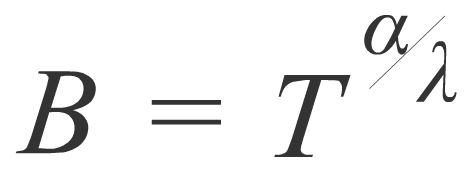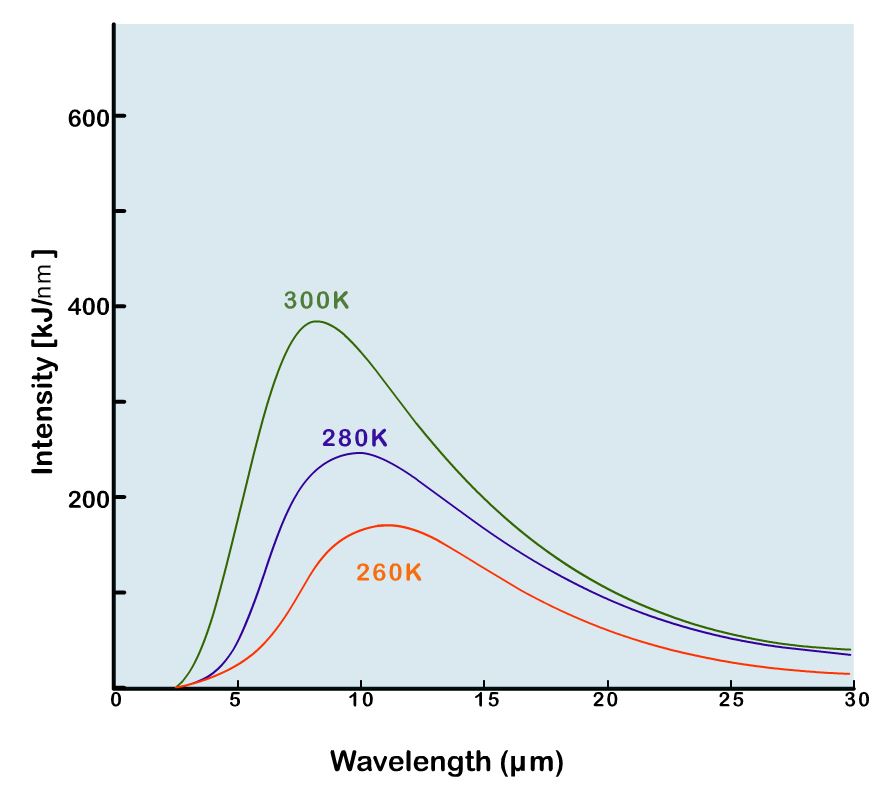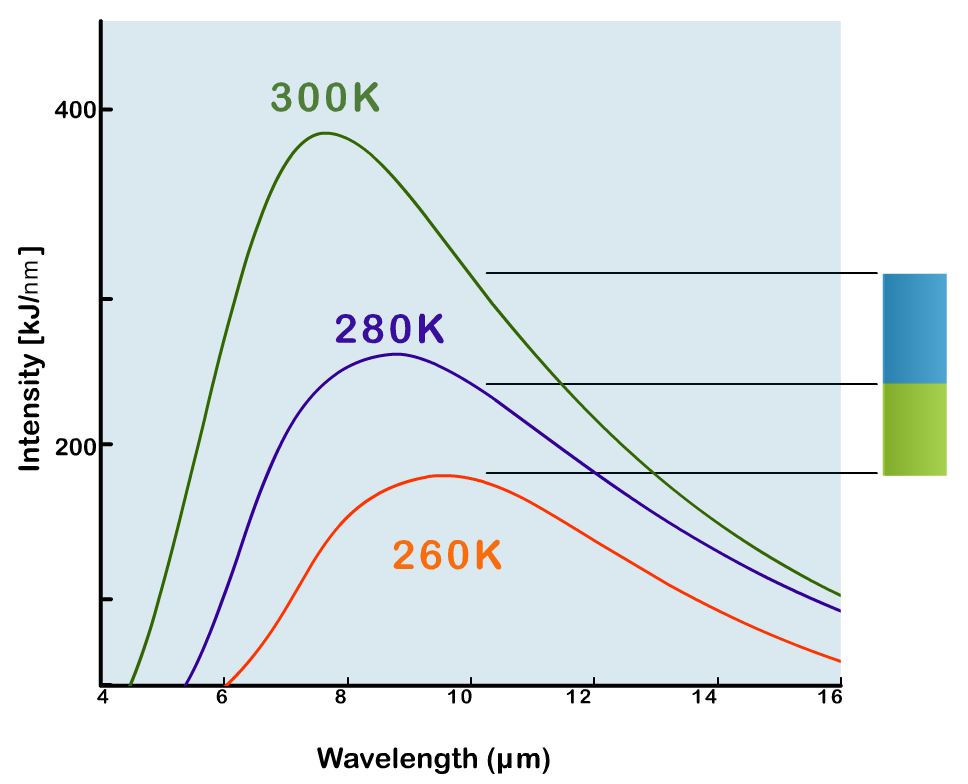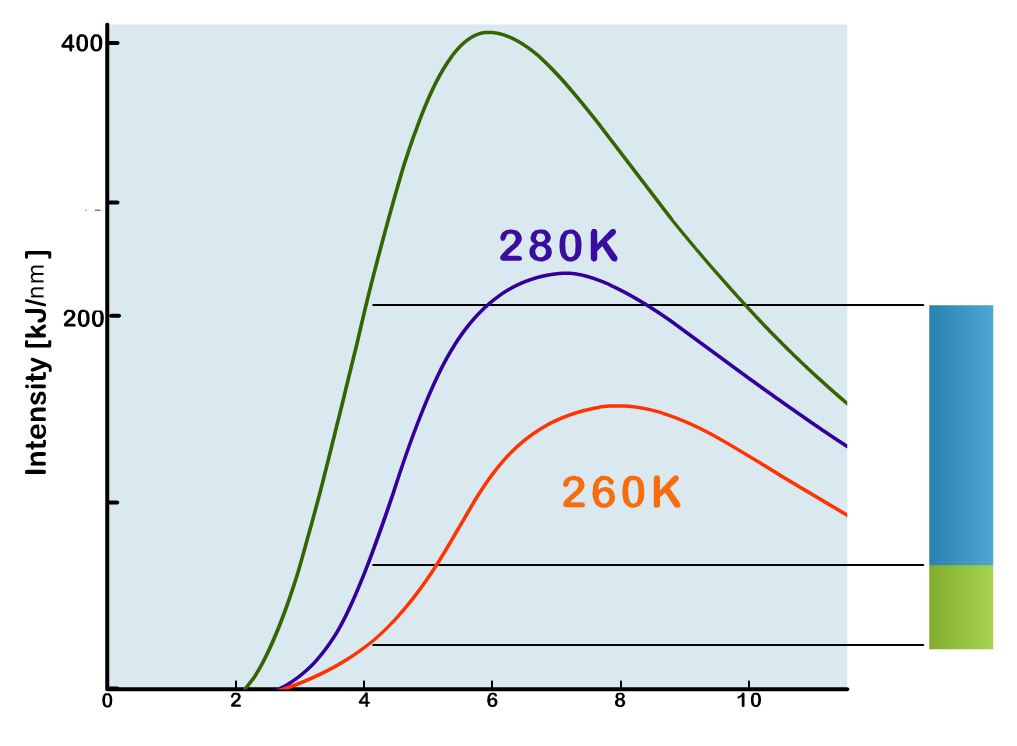Temperature Responsivity
Bands around 3.9 μm are also suitable for detecting fires because of two other properties: Temperature responsivity and Sub-pixel response.
Temperature
responsivity results from the fact that the Planck function is not
linear. In fact, it can be demonstrated that radiance (B) can be
related to temperature (T) by the following expression:
where α is a constant (approx. 2.8214) and λ is the wavelength. Please note that this is an approximation derived from the Planck law (the so-called Rayleigh-Jeans approximation) and is good to about 1% for long wavelengths, and therefore applicable to normal ground temperatures and fire temperatures.
So, temperature responsivity states that for different wavelengths, the change of radiance with respect to change in scene temperature varies as T is raised to the quotient of the constant α divided by the wavelength λ, the change in scene temperature is thus much larger at shorter wavelengths!
To explain the concept of "temperature responsivity" graphically, let us look to three Planck curves for black bodies at terrestrial temperatures (260, 280 and 300 K).
We zoom in on the 10 μm region of the spectrum and consider the change in intensity between the three curves.
At 10 μm a temperature change from 280 K to 300 K (blue bar) yields a change in intensity slightly larger than the change in intensity from 260 K to 280 K (green bar)!
However, if we zoom in on the region around the 4 μm region of the spectrum, the relative change of intensity is much larger at higher temperatures (blue bar) than at lower temperatures (green bar)!
This simply means that a change in scene temperature due to a fire will show a greater response at 4 μm than at 10 μm!



